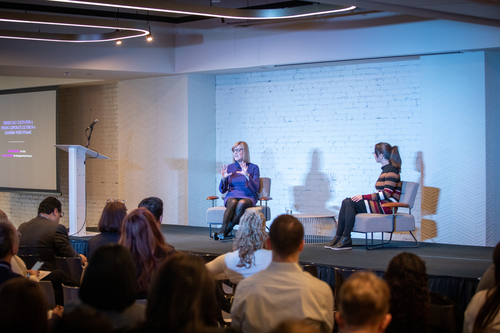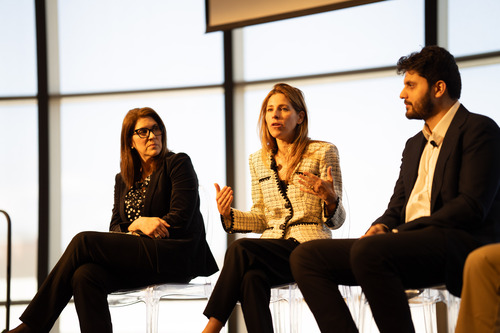Cultivating a Strong Corporate Culture in a Changing Work Dynamic
Everyone waited for business to go back to normal following the pandemic. But the pandemic has created a ripple effect that may have changed the workplace forever. Take the tech industry, for example. Jennifer Christie, chief people officer of DocuSign, says that before the pandemic, tech talent was at a premium. But as everyone went remote and everything shifted, tech jobs were less in demand. Christie spoke about the changing work dynamic at From Day One’s conference in D.C. The biggest shift, she says, has been the relationship between employers and employees, especially trust and shared values. But there were other changes.“Loyalty started to increase a little bit because people didn’t want to leave during the pandemic,” she said. “But they also wanted a lot of flexibility that companies were willing to take risks to offer.”Now that people are used to not commuting, they’d rather not go back to commuting. Same goes for any other benefits that arose during the pandemic. Some companies are having to dial things back, and now there’s more labor to choose from. The power dynamic is shifting–but so are expectations. “We’re having a new relationship dynamic. And just like with any relationship, when all those things shift, you’ve got to kind of recontract.” Employers and employees are having those hard conversations and figuring out a balance.Hybrid work has emerged as one give-and-take between employers and employees. Moderator Taylor Telford of the Washington Post asked how businesses can create a strong culture in a hybrid environment. “What does that look like at DocuSign?” They looked at specific roles when deciding who should be in the office and when, reclassifying the roles as necessary. But to make it fair, if someone was hired specifically as a remote worker, they could stay remote until they changed roles. “We’re not going to bait and switch you right in the middle of this. We knew this was going to take a while to evolve, and we’re going to let that work it out.” About half of the roles are remote and the other half are hybrid, with a specific schedule of when they come in.“But what I think we’ve moved to is not obsessing so much about where someone works, but how people are working,” Christie added. Obviously, they didn’t want people coming into the office just to sit on virtual calls the whole time. The return to work needed to make sense. Focus on Progression Generally speaking, employers strive to retain employees. But if the number of people leaving is super low, that leaves no room for anyone else to be promoted. That’s why Christie says progression has become more important than ever.“Promotion is not always progression,” she said. “There has to be development and learning.” Rotation programs can be helpful in giving people a sense of growth and development without taking a new role or a promotion. Gen Z workers are especially craving this kind of development.“I think they’re just a sponge right now. Because they have missed so many opportunities to observe and to have mentors and just to learn organically,” Christie said.Jennifer Christie, Chief People Officer of DocuSign, right, was interviewed by Taylor Telford, Corporate Culture Reporter at The Washington Post Speaking of various generations of employees, paying attention to their different needs is important in all aspects of what the company can offer, from growth opportunities to benefits. During the pandemic, benefit offerings may have expanded and changed. Now that we’re post-pandemic, it can be hard to take away what people are used to having.“The multigenerational employee bases that we have is challenging,” Christie said. Some want student loans paid off, others couldn’t care less about a 401k, and others care more about family planning, and more people are looking for caregiver support. “It can be all over the map,” she added. At DocuSign, they’ve taken a core benefits approach of what most people want and offer a menu of options to personalize them as much as possible. Yet another way things have evolved in a way that hopefully benefits employer and employee.Empower the ManagersPerhaps the most unprecedented phenomenon to emerge from the pandemic has been the rise of the middle manager. As Christie said “They were our frontline or defense. They knew how their people were doing, they were the ones to flag to us when things were going wrong, especially because we didn’t have our eyes on people in the same way.”“Managers have to be more agile and meet their employees where they are. If their employees need someone who can connect with them on a more personal level, they’ve got to lean in and do that.” Other employees may need less personalization and more direction. Companies need to prepare managers so they’re ready, no matter how things may shift.Carrie Snider is a Phoenix-based journalist and marketing copywriter.

.jpg)


